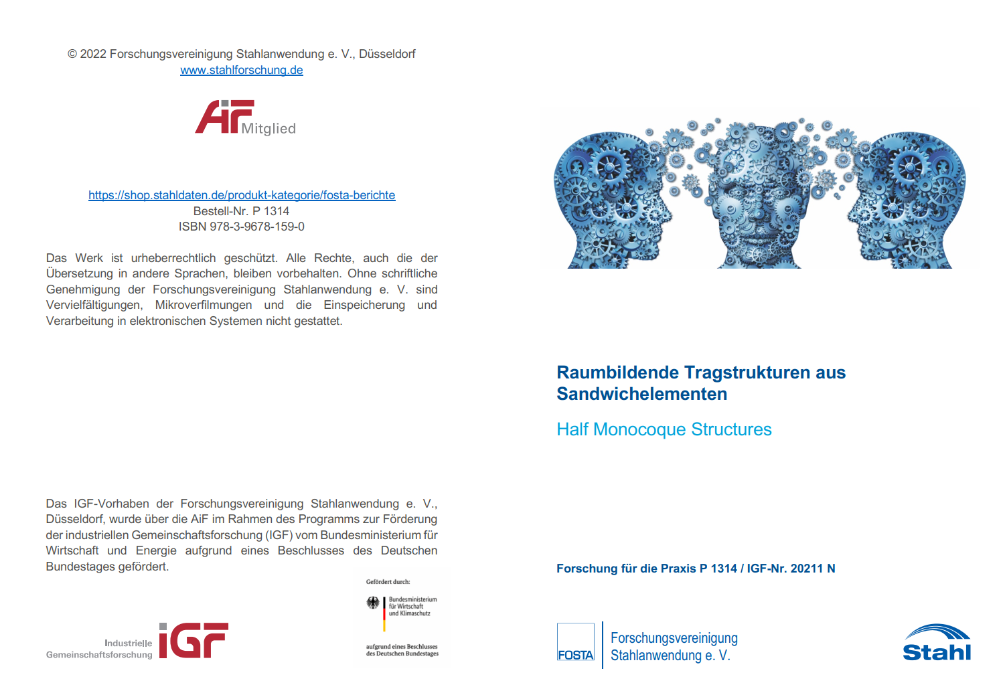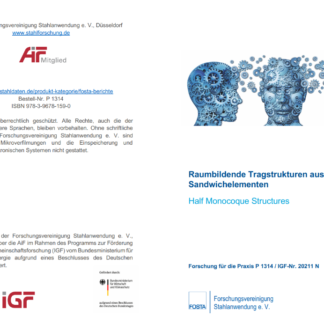Description
P 1314 – Half Monocoque Structures
(Steel-) Sandwich elements have load-bearing properties that allow loads to be transferred in and out of their plane, in addition to their outstanding space-enclosing function and thermal insulation properties. Single-story structures, for example small warehouses, gas station stores and car washes, can therefore be built with sandwich elements only, dispensing with additional load-bearing frame substructures. There is a lack of verification procedures for this, especially for load transfer, which would enable this economical construction method.
The aim of the research project was to validate and if necessary, further develop existing calculation approaches for load-bearing capacity and serviceability and the detailed solutions for load introduction and load distribution on the basis of experimental investigations. The knowledge gained from the holistic view of the construction method should then serve as the basis for obtaining a building authority approval.
To achieve these goals, a self-supporting structure made of sandwich elements was first designed as a sample object. For this purpose, all necessary design drawings and detailed solutions for the formation of the load application points and connection points were elaborated and specified for this application.
Using a test matrix defined in the research proposal, experimental investigations were carried out on the load-bearing behavior of a self-supporting structure made of sandwich elements. The extensive local and global axial compression tests were carried out on test specimens, considering a practical and application-related design of the load application points. The deformations and the maximum ultimate loads were measured.
Afterwards, the measured ultimate loads were statistically evaluated and the actual local and global bearing capacity as well as the failure behavior of the self-supporting structure made of sandwich elements were analyzed. Analytically determined ultimate loads in the ultimate limit state and serviceability limit state were used as reference. It turned out that the experimentally determined ultimate loads are far above the analytically calculated values. Thus, it was shown that a design of the structure with the existing design approaches provides conservative results and is thus on the safe side. The design of the load introduction structure for uplifting forces could also be ensured by a presented design approach.
In order to ensure a holistic view of the construction, an economic and ecological consideration of the construction method was carried out. In the economic analysis, it was shown that self-supporting structures made of sandwich elements without a steel substructure bring savings in investment costs of approx. 9% and in heating costs of approx. 10%. Also, in the life cycle assessment it was shown that the construction method brings emission and energy savings and is more environmentally friendly.
Overall, the research report provides sound scientific and technical basics for the design, construction and dimensioning of self-supporting structures made of sandwich elements as well as the necessary test results and evaluations for the acquisition of a building authority approval.
All research reports in german language only!
Published in:
September 2022
Authors:
Univ.-Prof. Dr.-Ing. D. Ungermann, M.Sc. G. A. Eseme


